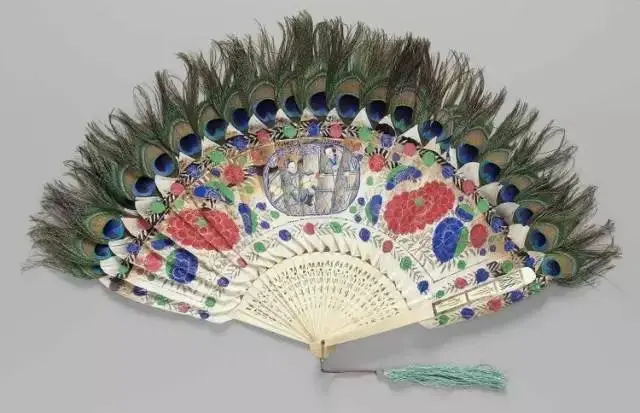Magpie fan, also known as Magpie Feather Fan, is one of China’s traditional handicrafts, renowned for its unique material and exquisite craftsmanship. It is a fan made from magpie feathers, showcasing beautiful patterns and colors on both the fan surface and the fan bones. Magpie fans are not only practical cooling tools but also artifacts with artistic value and historical cultural significance.
Historical Origins of Magpie Fans
The history of magpie fans can be traced back to ancient China when they were considered precious gifts exclusively enjoyed by the royal nobility. In ancient culture, magpies were seen as auspicious symbols, representing happiness and beauty. Therefore, magpie fans were regarded as symbols of blessings and auspiciousness, often presented to relatives and friends, especially newlyweds or couples, symbolizing good wishes and love.

Over time, the craftsmanship of magpie fans gradually spread, becoming a widely popular handicraft. During the Ming and Qing dynasties, the production of magpie fans reached its peak, with numerous skilled fan-making masters emerging. They continuously explored and innovated, creating various styles and designs of magpie fans, enriching this traditional craft.
Materials and Craftsmanship of Magpie Fans
The primary material used in making magpie fans is magpie feathers. Magpie feathers have beautiful patterns and rich colors, allowing the creation of exquisite fans. The craftsmanship of making magpie fans is quite complex, involving multiple processes such as material selection, cleaning, trimming, pasting, hot stamping, carving, and more. Each step requires skilled techniques and experience to produce high-quality magpie fans.
Varieties and Characteristics of Magpie Fans
Traditional Magpie Fans: Emphasizing practicality, traditional magpie fans typically use a single color of feathers for the fan surface, while the fan bones are made of hardwood or bamboo. These fans are simple and elegant, suitable for daily use.
Carved Magpie Fans: Carved magpie fans combine carving techniques with fan-making, creating artistic pieces. Craftsmen carve various patterns and texts on the fan bones, enhancing the artistic and collectible value of magpie fans.
Hot-stamped Magpie Fans: Hot-stamped magpie fans involve using hot stamping techniques to create exquisite patterns on the fan surface. Hot stamping is a method of using heat to imprint patterns on the material’s surface, offering unique aesthetic effects.
Inlaid Magpie Fans: Inlaid magpie fans feature the inlaying of various gemstones, pearls, and precious materials on the fan bones or fan surface. These fans exude a noble temperament and are considered luxurious art pieces.
IV. Cultural Connotations of Magpie Fans
As one of China’s traditional handicrafts, magpie fans are not only practical cooling tools but also artifacts with profound cultural connotations. They integrate traditional Chinese aesthetics, carving techniques, and craftsmanship, reflecting the unique charm and spiritual essence of Chinese culture. Additionally, magpies are considered symbols of good fortune in Chinese culture, so magpie fans symbolize good wishes and happiness. They are often gifted to relatives and friends, especially newlyweds or couples, to express blessings and wishes for happiness.
Challenges and Opportunities in Modern Society
With the rapid development of modern society and changes in people’s lifestyles, the traditional handicraft market has faced certain challenges. The scarcity and high cost of magpie feathers contribute to the increasing production costs of magpie fans. These factors pose challenges to the inheritance and development of magpie fans.
However, as people increasingly value traditional culture and aesthetic concepts, magpie fans, with their unique charm and artistic value, continue to be widely welcomed and sought after. Furthermore, the development of modern technology provides opportunities for innovation in magpie fan production. Introducing new materials and technologies can reduce production costs and enhance efficiency. Designing more fashionable and personalized styles can attract younger consumers, while expanding sales channels and strengthening brand marketing can increase product visibility and competitiveness.
Conclusion
In summary, magpie fans, as one of China’s traditional handicrafts, are not only practical items but also carry profound cultural connotations and artistic value. By understanding the historical origins, classifications, characteristics, and modern development of magpie fans, we can better appreciate the beauty and charm of this art form. Exploring artistic creation and cultural heritage can further promote the application and development prospects of magpie fans in modern society.
